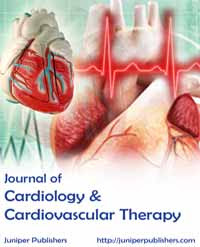Images in Cardiology -Skin Lesions in Native Valve Infective Endocarditis-Juniper Publishers

JUNIPER PUBLISHERS - OPEN ACCESS JOURNAL OF CARDIOLOGY & CARDIOVASCULAR THERAPY Introduction Janeway’s lesions are non tender small erythematous or hemorrhagic macular or nodular lesions on the palms or soles; they rarely present as a diffuse rash, and are rare in clinical practice [ 1 ]. Possibly the lesions are the result of septic micro emboli that originate from the endocardium, a fact that has been substantiated by histopathological studies in the literature [ 2 ]. Pathologically, the lesion is described to be a micro abscess of the dermis with marked necrosis and inflammatory infiltrate [ 3 ]. However Osler’s nodes are painful, erythematous nodules on the pads of the fingers and toes are more commonly seen in patients with subacute bacterial endocarditis. It is believed that the nodes are caused by an immunologically-mediated vasculitis caused by circulating immune complex deposition in the skin [ 4 ]. A 20 year old man presented with high grade fever w...



